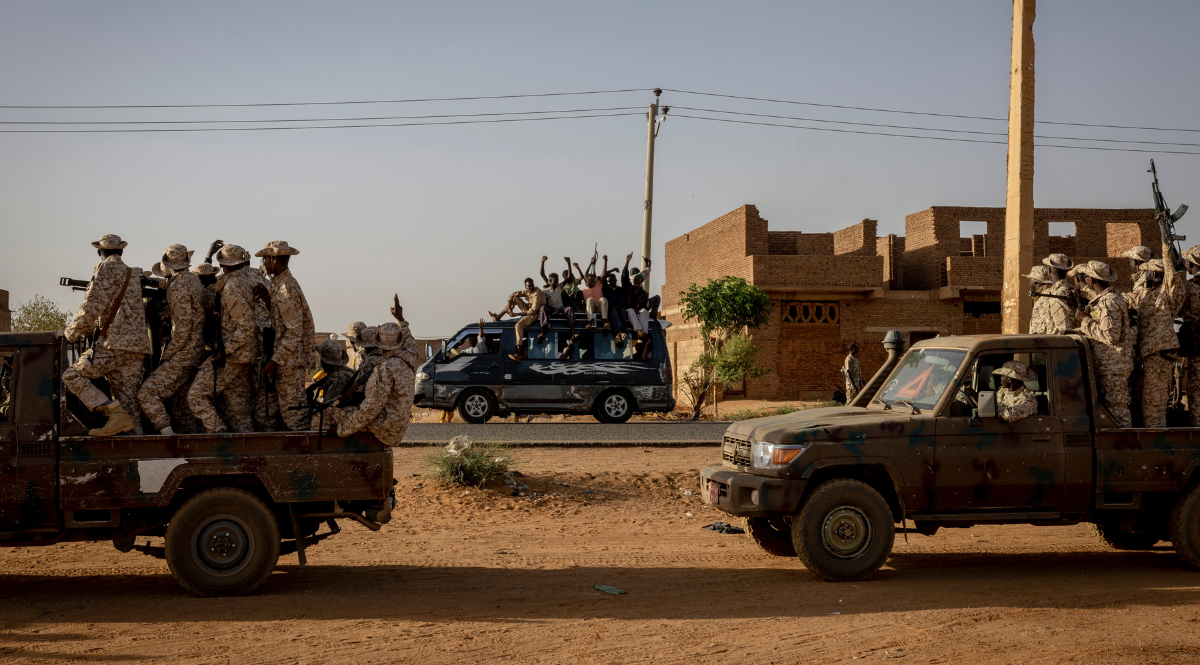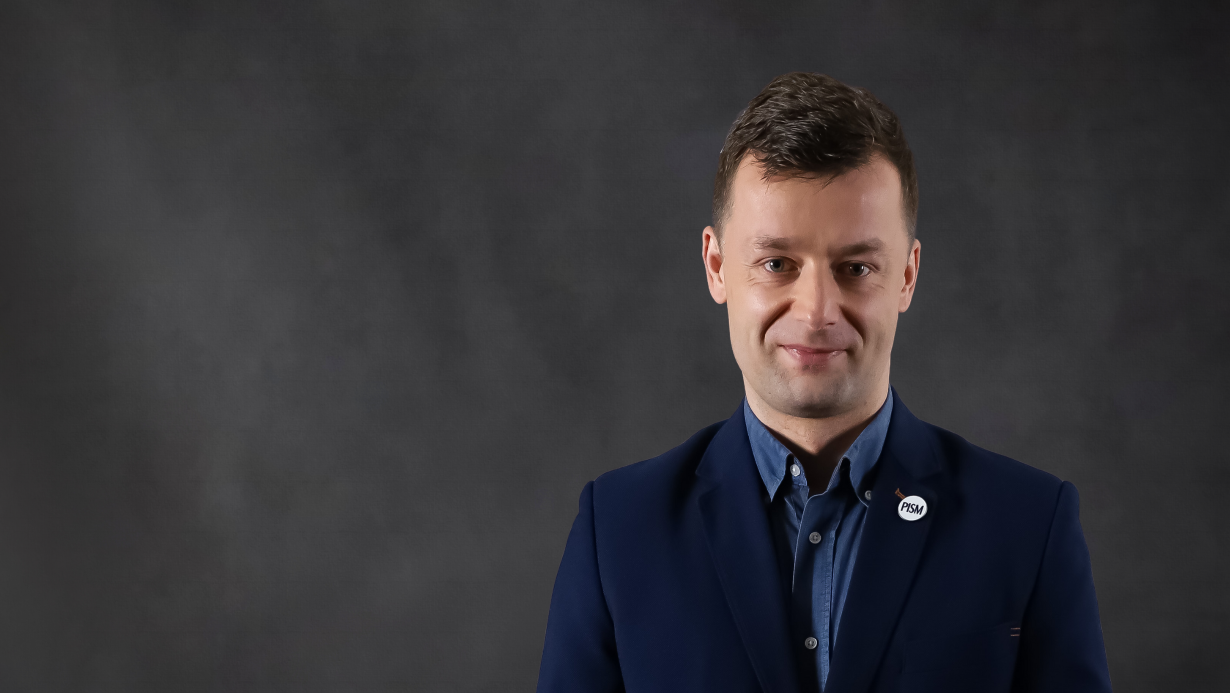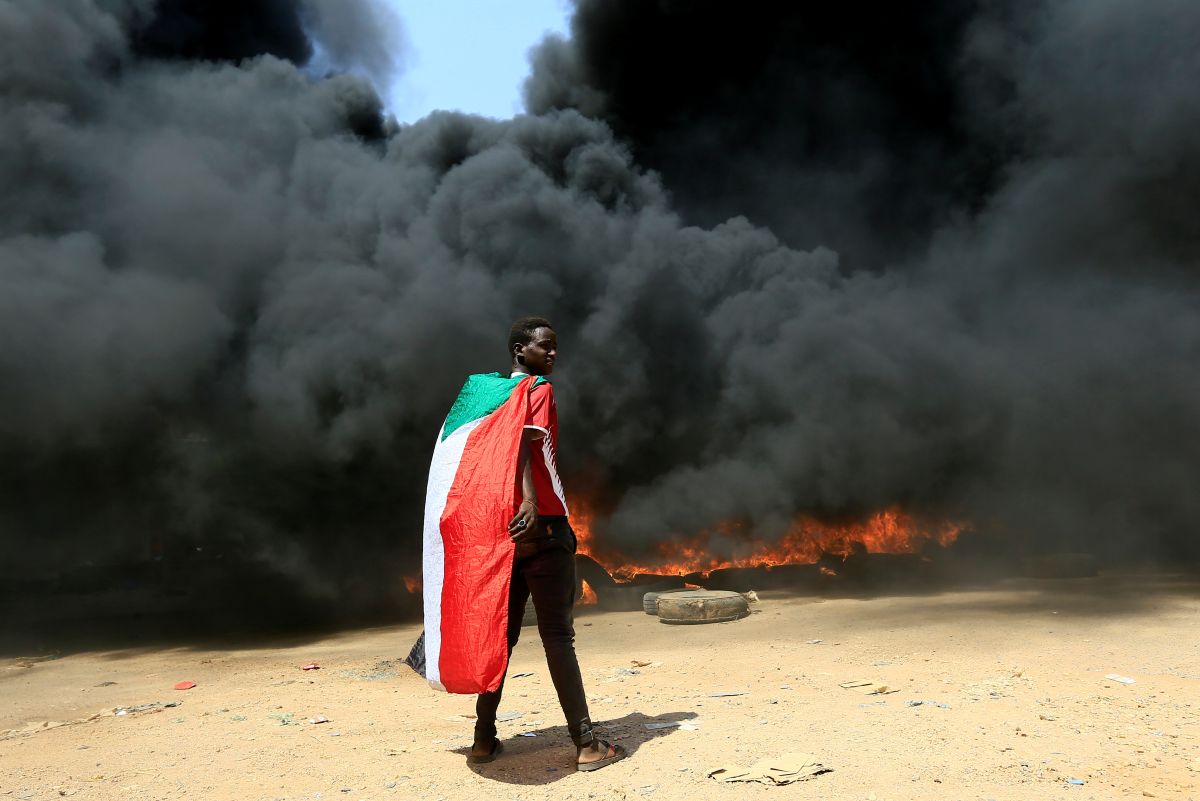Course of the War in Sudan Changes Suddenly
Since the beginning of this year, the Sudanese army has recaptured key territory in central Sudan and is pushing the militias of the so-called Rapid Support Force (RSF) out of Khartoum. This has been made possible by reorganisation and a massive enlistment of volunteers while the enemy’s resources are depleted. Internally displaced people are returning to areas abandoned by the RSF. An opportunity for a political solution is also emerging, but this will require international involvement, especially from the U.S. and the EU.
 Ibrahim Mohammed Ishak / Reuters / Forum
Ibrahim Mohammed Ishak / Reuters / Forum
A State Close to Collapse
The first year of the war that broke out in April 2023 was marked by military victories for the RSF. This group, made up of fighters from the Arab Baggara tribes of the Darfur and Kordofan regions, volunteers from the Sahel states (mainly Arab nomads from Chad and Niger), and mercenaries (from South Sudan, Ethiopia, Libya, and elsewhere) sought to conquer Sudan. The RSF has financial and arms support from the United Arab Emirates (UAE), with which it has a business relationship, such as gold exports, and a history of military cooperation during the war in Yemen between 2015 and 2020. In turn, neighbouring Chad made its territory available for the smuggling of Emirati supplies to the RSF. In Sudan, the group employed ethnic cleansing in the areas it occupied, carrying out displacement and seizing properties. In doing so, it sought to abolish the state, contemptuously referred to as the “Republic of 1956” (the year of Sudan’s independence), and replace it with its own tribal confederation. The war resulted in the greatest humanitarian crisis of modern times: some 13 million people fled their homes and famine threatened about 30 million, with around 150,000 killed in battle.
Initially, the Sudanese army was unable to counter the better-organised, equipped, and experienced militias that had consolidated power in the west of the country (most of Darfur and Kordofan), in the Khartoum metropolitan area, and the agricultural provinces of Gezira and Sennar in the centre of the country. In January 2024, RSF leader Mohamed Hamdan Dagalo “Hemeti” made a triumphant tour of Kenya, Uganda, Djibouti, Rwanda, Ethiopia, and South Africa with UAE support, where leaders received him like a head of state, signalling recognition of his victory. He also made a deal with some Sudanese political groups, including those around former Prime Minister Abdalla Hamdok (2019-2021), who hoped the militia would reduce the influence of Islamists linked to the regime of Omar al-Bashir (1989-2019) and enable them to return to power.
Changing Dynamics of the War
Sudanese troops under Gen. Abdel Fattah al-Burhan had been losing the war as long as they relied on their existing static, outdated structure. This changed in the spring of 2024 as a consequence of the RSF’s attacks on the indigenous Zaghawa population in North Darfur, the last part of the region where it did not have full control, and the start of the siege of the region’s capital, El Fasher. This threatened a repeat of the genocide that had previously occurred in El Geneina, West Darfur. To prevent this, Zaghawa-dominated armed groups, active in earlier conflicts in Darfur and Libya, formed the so-called Darfur Joint Protection Force under the political leadership of its governor, Minni Minnawi. They supported the army throughout the country by contributing their experience in manoeuvre warfare. At the same time, a recruitment campaign was launched using all available channels, tribal, ideological, etc. Associated with the army, battalions were formed both by democratic groups previously opposed to military rule in the country (e.g., Ghadiboon) and Islamist groups linked to the structures of the former al-Bashir regime (Al-Bara' ibn Malik Battalion). The enlistment was massive because, in the eyes of most Sudanese, the activities of the RSF constituted an occupation by a minority group (its social base represents about 7% of the Sudanese population) and foreigners.
The army also received equipment from abroad, including through Qatar and Turkey, and improved its tactics and reconnaissance. In September 2024, it moved to offensive operations: it crossed bridges over the Nile and established bridgeheads in Khartoum and Bahri (Khartoum North). In November 2024, it recaptured most of the Sennar province and, in December and January, Gezira. State services are being returned to these areas. In January, forces pushing from Bahri reached the centre of the Khartoum agglomeration. In turn, a military breakthrough north of Khartoum unlocked communications with the temporary capital, Port Sudan. The RSF found itself facing the imminent loss of the entire capital and all possessions east of the White Nile. As a result, its fighters began to abandon their positions and settlers took their looted possessions by the last route west, across the bridge over the Jebel Aulia dam, 30 km south of Khartoum. There they are attacked by the air force, and Sudanese ground forces approached from the south. Faced with defeats in central Sudan, the RSF has stepped up attacks on civilian infrastructure, including drone attacks on power plants.
Situation in Darfur
The RSF dominates most of the Darfur region, but it has so far failed to capture the historic capital, the metropolitan area of El Fasher, which has a population of around 1.5 million, to which the Zamzam refugee camp is adjacent. The army, Joint Protection Force and volunteer groups, in which women also serve, have managed to repel more than 180 assaults on the city. To attack more effectively, the RSF has been sourcing reinforcements through Libya in recent weeks, including groups of Colombian mercenaries recruited by the UAE and columns of combat vehicles from Gen. Khalifa Haftar’s forces, among others, have been arriving. Troops of the Joint Force and local insurgents dispersed them in the deserts of North Darfur, near the junction of the Sudanese, Chadian, and Libyan borders. Sudanese forces also destroyed the RSF’s main desert base, Zurq, which received arms from Chad. In El Fasher, the RSF has been using drones, presumably flown from Chad, to destroy remaining medical outposts, such as the Saudi hospital, where, for example, 70 people were killed in an airstrike on 25 January. They have also twice tried to cut off drinking water to the town, but the defenders have managed to regain control of the water intake.
Once the situation around the Sudanese capital is stabilised, the main army forces will move (and part of the Joint Protection Force has already moved) west towards the Kordofan and Darfur regions. This will be the most difficult phase of the war. While the population in the centre of the country and in El Fasher overwhelmingly oppose the RSF, the eastern and southern parts of Darfur are its recruiting ground. While desertions and local communities’ declarations of distancing themselves from the RSF are increasing, some will remain loyal to them. In this, narrowed area, the war will therefore continue as a low-intensity local conflict.
Political Outlook
Before the war, the Sudanese sought to strip the military of its dominant roles in politics and the economy, but now the army has gained widespread support as a force leading, despite violations, the liberation struggle. This is evidenced, for example, by the attitude of the internally displaced. The first of them returned to the areas recaptured by the army just days after the withdrawal of the RSF. Around 100,000 people may have returned to Sennar and Gezira in recent weeks, with more soon to arrive in the northern parts of Khartoum. This does not diminish the threat posed by revanchism and the militarisation of society. On the occasion of the recapture of Wad Madani, the capital of Gezira, forces from the Malik al-Barra Brigade and the so-called Sudan Shield (the latter was formerly on the side of the RSF, but switched) carried out executions against the Kanabi population from Darfur, collectively recognised as RSF collaborators. Similar persecutions in Khartoum, for example, was meted out to activists who remained in areas taken over by the RSF to organise aid to their inhabitants. Effective pressure to stop these atrocities can only come from within the pro-military bloc, or from states with influence over the army (e.g., Turkey, which has leverage over the Sudanese Islamists). Rebuilding peaceful relations in society will be a long and difficult process.
On 9 January, Gen. Burhan presented a political perspective from a winning position. He announced the formation of a technocratic government with a civilian prime minister and the opening of a new transition period. In doing so, he stressed that neither the former regime’s Islamists would return to power (they would, however, be allowed to stand in elections), nor the ruling team when Hamdok was prime minister, compromised by links with the UAE and the RSF. In doing so, Burhan expressed a willingness to include those who break with the militias in political life. Although these declarations clearly indicate a desire to maintain the dominance of the military command in political life after the war, still, it was the most conciliatory declaration of the generals so far. Its tone was partly necessitated by the plans of their opponents, who are preparing the announcement of an alternative government in the RSF territories and, as their recent consultations in Nairobi demonstrated, retain the ability to expand political alliances. However, with the U.S. recognising the group’s actions as genocide, their alternative government has no chance of international recognition.
For the war to actually end, it will be necessary for the UAE to withdraw its support for the RSF. So far, the UAE has not shown the will to do so and there are signs that it intends to open up new channels for the supply and recruitment of mercenaries, such as through South Sudan. To block this, pressure on the UAE must be increased by the U.S., which is keen to cooperate with it in the Middle East, and the EU, for which a resurgence of the RSF would risk a mass migration of Sudanese to Europe.





.png)